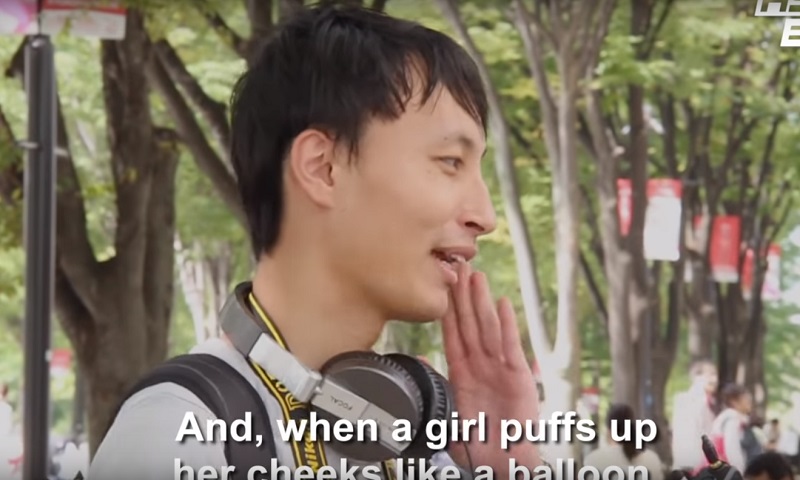Posted by admin | January 18th, 2020
Yoko Kamikawa, a former gender equality minister, agreed that the current pension system—final up to date within the 1980s—must be expanded to include part-time staff. Forty years ago, single-income households made up the overwhelming majority in Japan. Since then, Kamikawa said households have turn into more diverse.
Rather, officers say, women’s admissions are consistent with the applicant pool. at Tokyo Medical University, where officials acknowledged suppressing the doorway-examination scores of feminine applicants for years. “We have probably the most powerful training that we will dangle” in entrance of anybody, said Nobuko Kobayashi, a 1996 Todai graduate and a associate at EY Japan, where lower than 10 p.c of partners are women. For almost twenty years, enrollment of girls on the University of Tokyo has hovered around 20 %, an imparity that extends across many top schools.

Unlike different Indian faculties, Ms. Angelina mentioned, Little Angels was meant primarily for Japanese children, to satisfy the need she had found when she despatched her sons to Japanese kindergarten. Henshall, K. G. (1999). A History of Japan. Macmillan Press LTD. p. sixty one.
TOKYO — From a younger age, Satomi Hayashi studied exhausting and excelled academically. It appeared solely natural that she would comply with in her father’s footsteps and attend the University of Tokyo, Japan’s most prestigious establishment. According to the BBC, a number japanese girls of Japanese shops mentioned corporations have “banned” women from wearing eyeglasses and that they provide a “chilly impression” to female shop assistants.
Among seven publicly funded nationwide establishments, women make up simply over one quarter of undergraduates. At the unique private universities Keio and Waseda, women are a little over a third. Prime Minister Shinzo Abe has promoted an agenda of female empowerment, boasting that Japan’s labor pressure participation fee amongst women outranks even the United States. Yet few women make it to the executive suite or the best levels of presidency. The dearth of ladies at Todai is a byproduct of deep-seated gender inequality in Japan, where women are nonetheless not expected to realize as much as men and sometimes maintain themselves again from academic alternatives.
But there are additional obstacles for Japanese women. Although 3.5 million of them have entered the workforce since Prime Minister Shinzo Abe took office in 2012, two-thirds are working only half-time. With entitlement costs skyrocketing, the government has responded by scaling again benefits while proposing to raise the retirement age. Some Japanese responded by moving money out of low-curiosity financial institution accounts and into 401(okay)-fashion retirement plans, hoping investment features might soften the blow. But such a technique requires savings, and ladies in Japan are less more likely to have any.
Young women who want to turn into geisha now usually begin their training after ending junior high school or even highschool or school. Many women begin their careers as adults.
Let’s see if most Japanese women agree to this. Some Japanese women in their 20s seem to have began in junior high school, while those of their 30s and 40s have been split of their answers.
Japanese women on social media are demanding the right to put on glasses to work, after reviews that employers were imposing bans. National Institute of Population and Social Security Research (IPSS). “Attitudes toward Marriage and Family among Japanese Singles.” 2011.
Legally, few barriers to women’s equal participation within the lifetime of society stay. However, socially they lack alternatives within the workforce due to the lengthy work hours and dominance within the office by men. The reporting sparked outrage on social media. Thousands of individuals tweeted their support for Japanese women facing prejudice in the office as a result of the glasses bans. This isn’t the primary time Japan has come beneath fire for outdated gown codes.
Little is known of them as people, and the emotional content material of their lives remains largely unrecorded. The accounts women themselves left molder in household archives, and aggregate data can scarcely provide insights into the character of their childhood experiences, their relations with their husbands and their husband’s family, and their later years. It is simply by piecing collectively a variety of completely different sources that we will start to perceive, in patchwork, a sample to these women’s lives. Earlier this yr, Japanese women started voicing their discontent with arcane office restrictions on their appears via the #KuToo motion, which drew attention to the requirement that many companies still have that girls put on excessive heels to work.